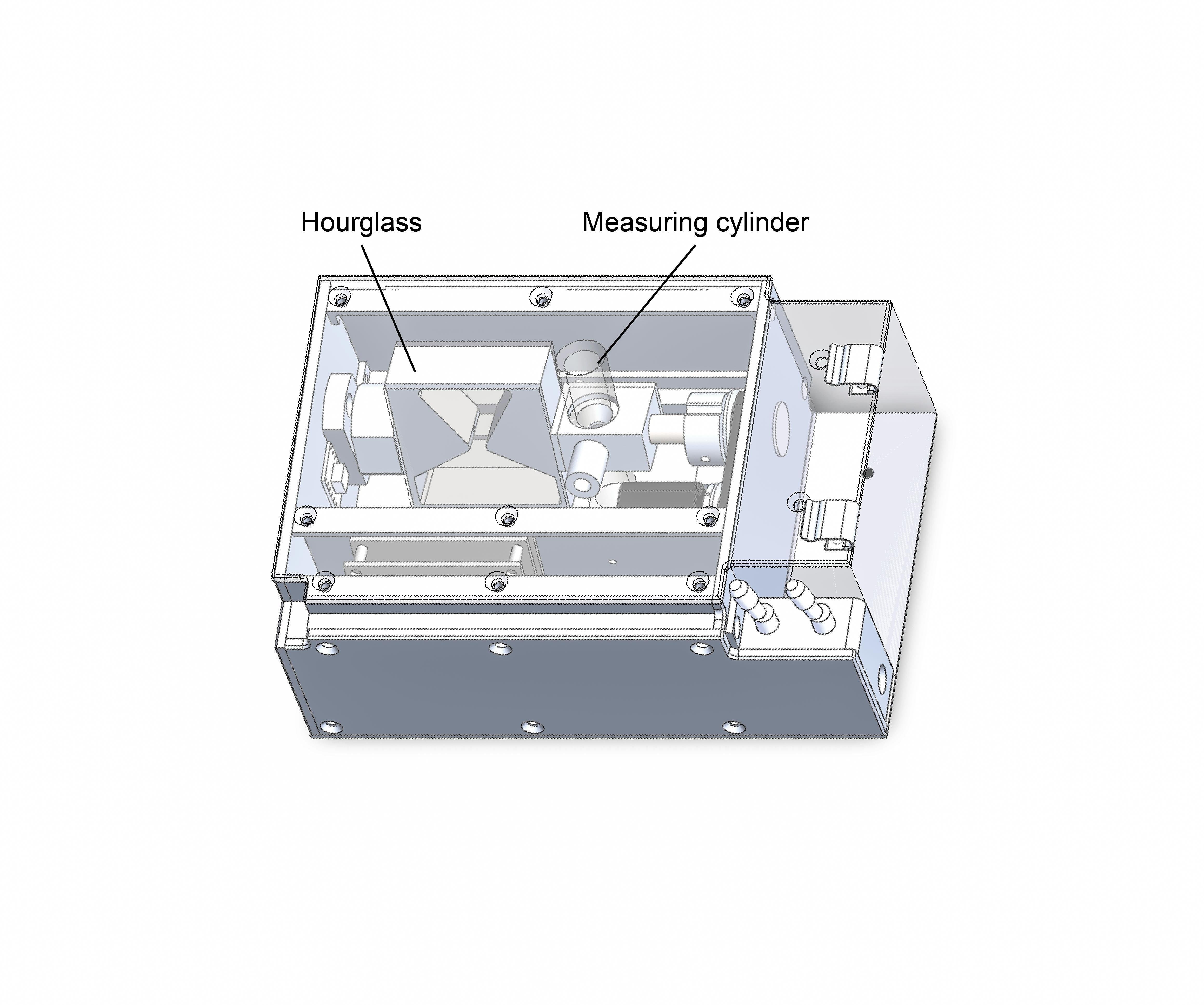- completed
[Soret-Facet]
Study on Soret effect (thermal diffusion process) for the mixed solution by the in-situ observation technique facilitated at SCOF
- Physical Science
ISS Science for Everyone
SCIENCE OBJECTIVES FOR EVERYONE
The Soret effect in fluids is a thermodynamic phenomenon in which different particles respond in different ways to varying temperatures. The effect, studied by the Swiss chemist Charles Soret, has been difficult to examine in detail on Earth because of gravity. The Study on Soret effect (thermal diffusion process) for the mixed solution by the in-situ observation technique facilitated at SCOF (Soret-Facet) is the first investigation to verify Soret conditions in steady and changing conditions, and to compare the Soret effect in microgravity with results on the ground, an important measurement for calibrating future investigations.
Experiment Description
RESEARCH OVERVIEW
- Precise determination of the Soret coefficient is not able to be performed on earth due to the experimental constraints that relate to the phenomenon of convection under gravity conditions.
- The science team seeks to obtain precise information on the determination of the Soret coefficient, utilizing a laser spectroscopic technique in the Solution Crystal Observational Facility (SCOF) in the JEM.
- This research focuses on observing Soret physics under steady, non-steady, and transient conditions- including the supercooled liquid phase. This represents the first ever verification results to link Soret physics with thermodynamics, and should produce the first benchmark results in microgravity for comparison of the Soret effect with convection controlled observations on earth.
DESCRIPTION
Soret-Facet investigates Soret physics: a thermodynamic effect in which a concentration gradient occurs in a temperature gradient inside of a liquid mixture.
A technique using the SCOF/FACET Mach-Zehnder interferometer has been developed to observe this effect. The objective of the technique is to precisely obtain Soret coefficients for liquids in microgravity conditions. Due to the presence of convection on earth interfering with measurements, it is expected that in microgravity that very precise measurements of Soret coefficients are possible.
The goals of the Soret-Facet investigation are as follows:
- The investigation of the universal relation between Soret physics and thermodynamic expressions under various conditions. The Soret coefficient at steady, non-steady, and transient conditions is compared to theoretically estimated values as calculated by Onsager reciprocal relations.
- Study a possible application for non-steady transient conditions.
- Finding thermal coefficients in a transient solution.
- The investigation of crystal growth by the thermal diffusion effect.
Media Gallery


Applications
SPACE APPLICATIONS
Soret-FACET uses the microgravity environment of space to suppress the effects of convection, which is difficult to control on the ground. This provides scientists a clearer view of the Soret effect in action. A laser spectroscopy instrument called the SCOF/FACET interferometer makes precise measurements of Soret phenomena to calculate a constant value, or the Soret coefficient, which can be used to study these thermodynamic effects. Results from the investigation can improve knowledge of thermodynamics, fluid dynamics, and crystal growth in microgravity.
EARTH APPLICATIONS
Results from the investigation improve scientists’ understanding of thermodiffusion, a temperature-related effect in which different particles exhibit different behaviors in response to a temperature gradient. These results are applied to studies of mass transport, including heat and energy in Earth’s interior, oceans and atmosphere. The investigation also applies to refinement of crude oil, crucial for transportation and many other uses on Earth.
Operations
OPERATIONAL REQUIREMENTS AND PROTOCOLS
This experiment requires constant tracking of the interference fringes movement at the SCOF. Video recording using the Image Processing Unit (IPU) during ISS Loss of Signal (ISS/LOS) periods is vital for the experiment to be carried out successfully.
Crew members install the Facet cell into the SCOF (Solution Crystallization Operations Facility). Next, ground operators configure the temperature gradient at the Facet cell. Interference fringe imaging of the Soret effect on the solution (Sarol/Buthanol) can be obtained in the SCOF. The experiment run continues for approximately 24-48 hours. The temperature conditions must remain constant during the experiment run. At completion of the experiment, the crew removes and stows the Facet cell.
Note that crew operation is requested to set up, remove, and re-orient the Facet cell in the SCOF. Crew time for the experiment is estimated at 2 hours.
Publications
PRINCIPAL INVESTIGATOR(S)
SUZUKI Shinsuke [Waseda University]
Unless specified otherwise, rights to all images belong to ©JAXA



